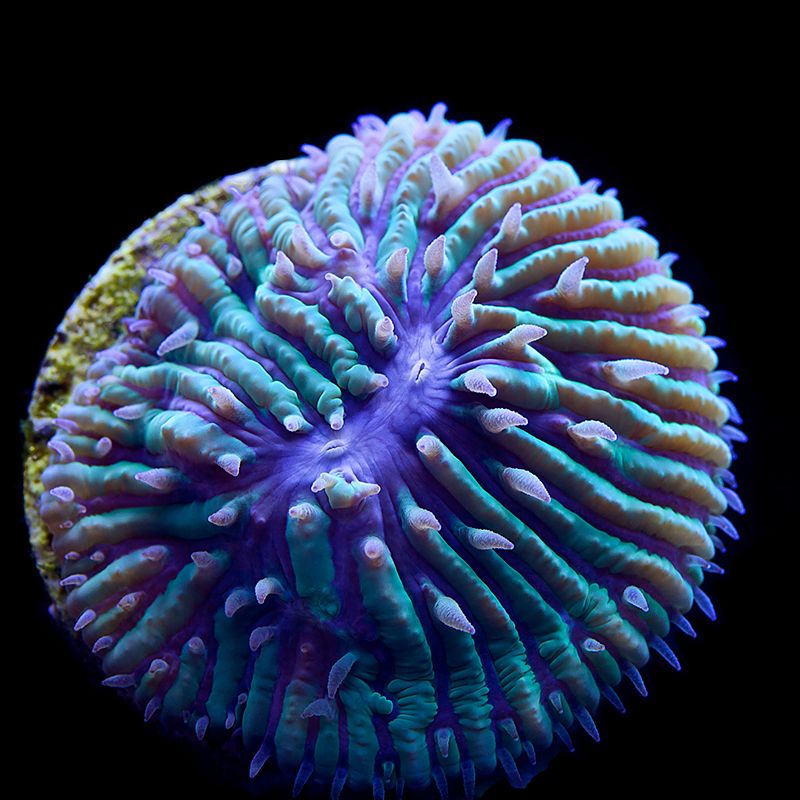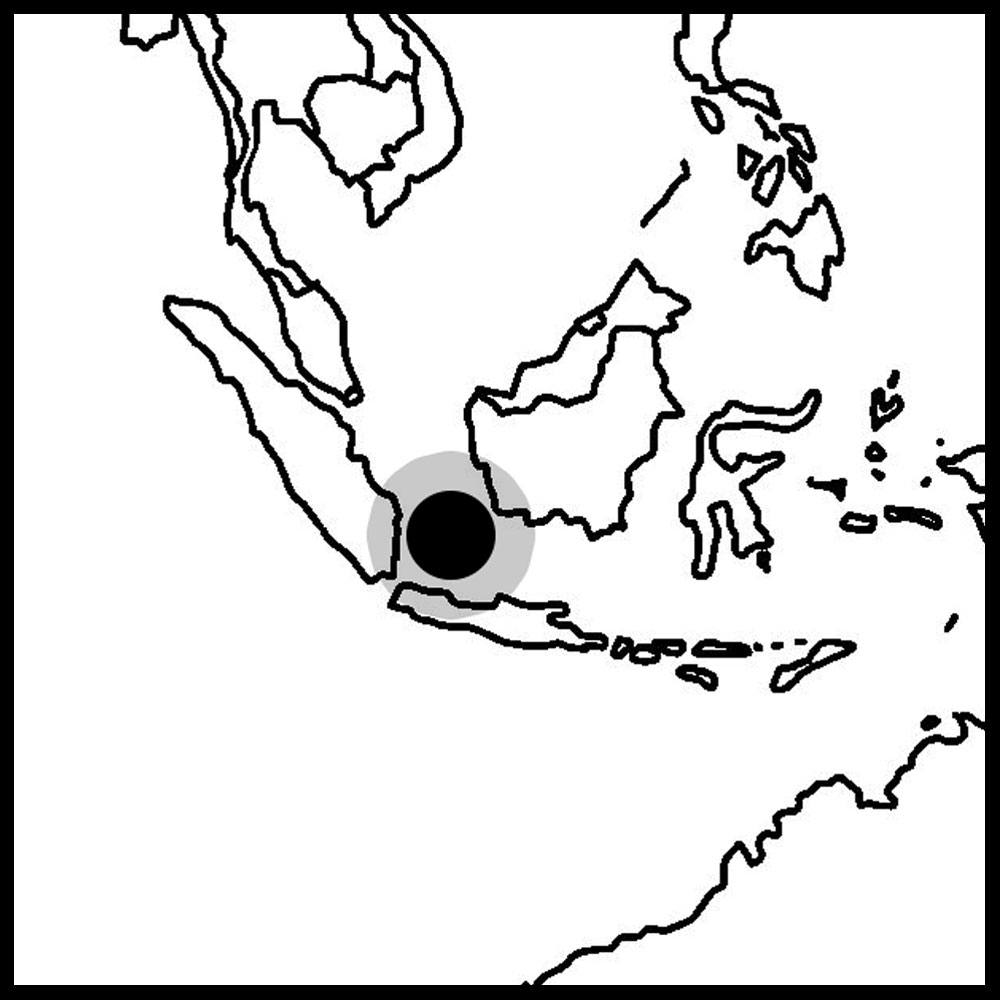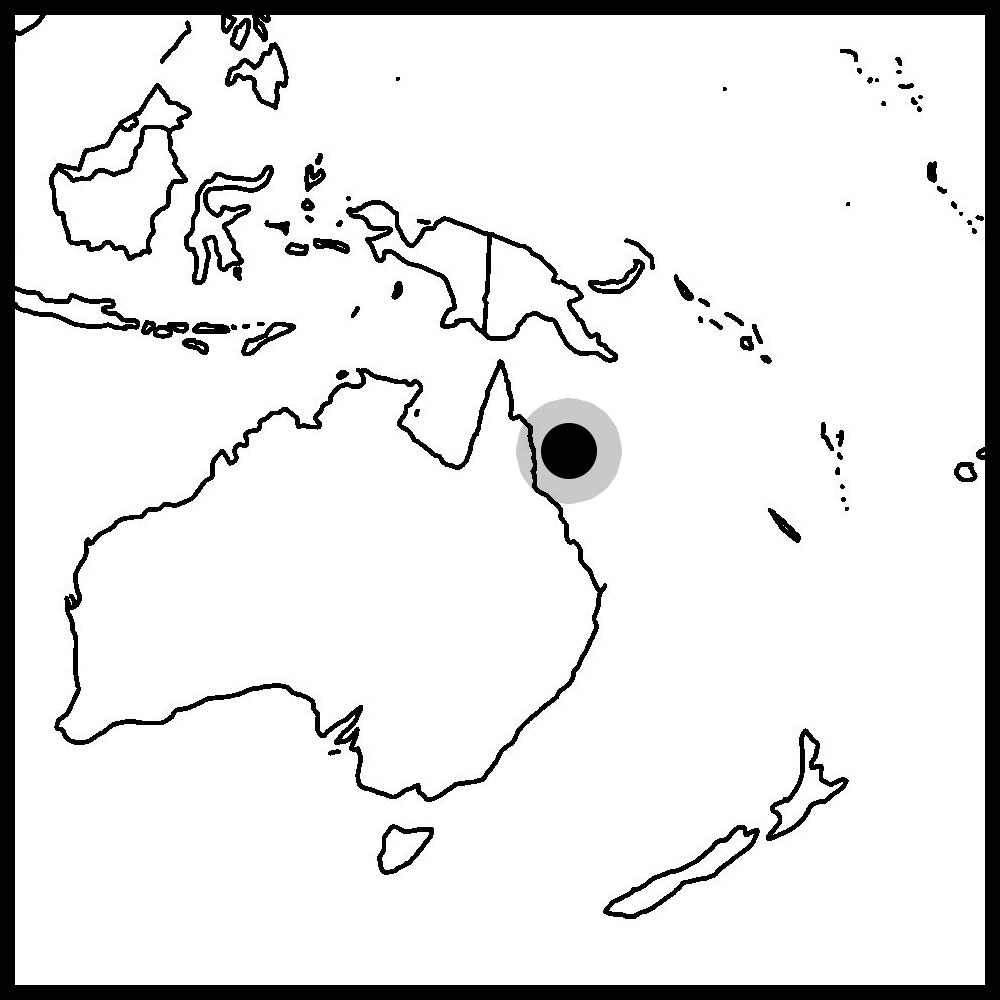Filter
My Wish List
![]() Plate Coral Care
Plate Coral Care
The term “plate corals” refers to a collection of several different corals from the family Fungiidae. In the hobby the most commonly seen varieties are Fungia, Heliofungia, Diaseris, Cycloseris, and Lithophyllon. In all there are around 13 different genera that make up the family Fungiidae.
These corals are flat solitary corals. They sometimes with a single mouth while others have multiple mouths. Most of them take on a circular shape however some varieties take on more irregular shapes such as tongue corals that have an elongated form.
On this site, these corals are lumped together in a single category because they can be difficult to tell apart. In some cases, the differences between coral types are more pronounced for example, Lithophyllon for a long time was considered a chalice coral so clearly someone thought it looked different enough to be sorted into a completely separate category of LPS.

On the other hand, some genera are close in appearance and extremely challenging to differentiate. For example, I can’t easily tell the difference between Cycloseris, Fungia, and Danafungia based on the pictures seen online. Also, tongue corals are made up of a few different genera such as Ctenactis and Herpolitha which look practically the same. Confusing the situation a little more is the fact that taxonomy is fluid and coral classification changes as new discoveries are made. Corals get bounced from category to category and it takes years for the reef aquarium industry to adopt the latest nomenclature.
![]() Location
Location
Plate corals are found throughout the Pacific. The ones most commonly seen in the reef aquarium hobby are sourced from Australia and Indonesia.


![]() Care Requirements
Care Requirements
As for care requirements, plate corals are pretty similar. Overall, I would say that plate corals are easy large polyp stony corals to keep and they can adapt to a wide variety of tank conditions. The only one I personally avoid is Heliofungia or the long tentacle plate coral. They look amazing in that they have an anemone-like appearance and grow to impressive sizes. Unfortunately, they have a history of sudden death. They often do great for a few months but then one day just die overnight. There may be hobbyists with more success with them these days with more feeding options for corals (assuming the problem is diet related), but personally I do not have much interest to in trying them again.
![]() Plate Coral Placement
Plate Coral Placement
We should first address where to place these corals. Quick answer is the bottom of your tank but in reality you really don’t have a lot of say in the matter. Plate corals are one of the few stony corals that are capable of inflating their flesh and moving around on their own. Often times attempts to keep them on the rock scape go poorly because they are very capable jumpers and will find their way down to the substrate in no time.
My recommendation is to go ahead and start them off right on the substrate and let them scoot around until they find a spot they are happy with. They may perpetually move around the substrate so don’t expect them to eventually stop. Given their ability to move short distances, provide plenty of room away from other corals on the substrate that they may touch. Plate corals are not the most aggressive corals, but they can do battle with other corals they come in contact with and you really want to avoid aggression issues whenever possible.
![]() Substrate Choice
Substrate Choice
One question I get a lot is what type of substrate to have in the tank. This one is a little tricky. If I had to recommend anything it would be crushed coral that is medium to chunky grain but definitely not sugar powder fine sand. I’ve kept these corals on very fine substrate before but it is not the best. Similarly I don’t like keeping them on a bare bottom tank if at all possible. This is purely anecdotal experience but sometimes they get a dead spot on their flesh and it causes an infection. This seems to happen more in these types of substrates, but again, your mileage may vary. One other observation I can provide regarding substrate is that I have seen these corals diving in the Pacific and usually they are in very rocky terrain. Similarly, when I have seen them in public aquariums they are kept on rough, thumb-sized gravel substrates.
![]() Lighting
Lighting
When it comes to lighting plate corals are not too demanding. They do well in a wide range of intensities, even fairly low light around 50 PAR. Even in brightly illuminated aquariums, the light they would receive is muted because corals towards the bottom of the tank don’t get as much light as the corals towards the top of the tank due to the inverse square law. As you move a coral further away from a light source, the intensity is divided by the square of the distance, so if you moving a coral twice as far away from a light source, cuts down the light to one quarter.
The light intensity a plate coral receives is further cut down by any cloudiness or opacity in the water or shadings from rock overhangs coral colonies above it.
Low Light


Lighting is a loaded topic, so for a more in-depth discussion of lighting, please see our Deep Dive article.
Some plate corals have very bright fluorescence making them spectacular show pieces under full actinic lighting. For these particularly bright specimens I like to provide the aquarium with a couple hours of blue light to enjoy this aesthetic in the evenings.
![]() Water Flow
Water Flow
As for water flow, plate corals will do fine in medium to low flow. I try to keep them out of high flow areas for two reasons. First, many varieties of plate corals are fleshy and too much flow can damage them. If you see the water flow exerting a lot of pressure on one side of a plate coral to the point where you can start to see the flesh drawn in tonight to the skeleton that is too much flow. One thing to note is the flow at the bottom of the tank where the glass meets the substrate can be an area of stronger flow as the water hits the glass and whips around to the bottom. Just be aware of that in case one of these corals creeps over to the sides of the tank.
![]() Feeding
Feeding
Plate corals are photosynthetic so they get nutrients from the products of photosynthesis carried out by symbiotic zooxanthellae living in their flesh. In addition to photosynthesis, these corals are adept feeders that can grab and consume a wide range of foods such as coral-specific sinking pellets and frozen food such as brine shrimp, mysis shrimp, and krill.

Despite their appetite there are two things to watch out for if you are looking to feed these corals. The first concern is overfeeding. I have seen some of these corals react poorly if they are fed large quantities every day. I think they need a little bit of time to expel waste from the previous day so here we do not feed them more than 3 times per week. I don’t know if other aquarists have experienced the same sort of thing but for us we like to play it safe.
The second concern with feeding is that certain fish and inverts such as shrimps and crabs can treat these corals like vending machines when they learn they are constantly full of food. I love cleaner shrimp and peppermint shrimp for the utility they provide but as they get larger and more boisterous they can really mess with corals that are fed heavily.
In your tank, you will need to pay attention to this dynamic. I love feeding corals and I definitely think that they benefit from it, but it can’t come at the cost of severe damage from tank-mates. Another option when it comes to feeding that may be effective without the risk of damage from tank-mates is amino acids. I am hearing more and more aquarists that make a concoction of amino acids and fine plankton powders to spot feed corals. That might be a great way to supplement the plate coral’s nutrition with minimal risk of damage.
![]() Water Chemistry
Water Chemistry
Plate corals are stony corals and they need a consistent supply of calcium, alkalinity, and magnesium in the water to facilitate their skeletal growth. I try to keep each of these parameters in line with natural sea water levels and maintain consistent numbers. So for calcium, shoot for around 425 ppm. For alkalinity, around 8 dkh, and for magnesium around 1350 ppm. Consistency of water chemistry is more important to me than the raw numbers so if you see that one of these parameters is lagging behind or elevated, don’t be in a rush to change the water chemistry. Slowly correcting the figures over time is a lot less stressful on your corals than current water chemistry that is not in line with your goals.
The next chemical parameter I’ll talk about here is nitrate. Certain large polyp stony corals seem to be more sensitive to nitrate than others and I have lost a plate coral here and there suddenly when my nitrate is too high. It may be a coincidence or the cause of some damage in handling getting to me, but I don’t have this same sort of problem in the systems with lower nitrate levels. If you are struggling with keeping these corals, it may be wise to double check your nitrate levels and see if they are getting too high. Anything over 30ppm nitrate might be an issue and I like to try and keep nitrate levels between 5ppm and 20ppm. Corals can adapt to high nitrates over time, but most of the problems we see is a new coral being brought into a high nitrate environment and failing to adjust.
Lastly, if you struggled to keep plate corals in the past it is good to check to see if phosphate levels in the aquarium were too high. Phosphate is needed by corals in small quantities but an abundance of phosphate can lead to unwanted nuisances such as algae. The other problem phosphate can cause is that it inhibits calcium uptake in stony corals. Having said that, many aquarists have been successful adapting corals to aquariums with very high phosphate but it is not optimal and if there is a coral struggling in a high phosphate environment that is one area that could be the culprit. Here at Tidal Gardens we have kept corals in systems that had over 2 ppm phosphate but also kept systems where the phosphate was under .05 ppm. I liked the results with the lower phosphate levels better.
![]() Propagation
Propagation
When it comes to propagation, plate corals are a mixed bag that depends a lot on which genus we are talking about. Some can be broken into pieces and recover while others cannot. Some varieties are so resilient in fact that they can experience major die-back from a stress event and months later the remaining tiny bits of flesh will grow back into mini colonies called anthocauli. Plate corals are also capable of sexual reproduction as well as budding so they have a lot of tools in their reproductive kit.
Their growth rates are all across the board as well. There are some varieties of plate corals that are extremely slow growing while others we have seen grow from the size of a small coin to a 8” diameter plate over the course of a year.
The only varieties that we actively propagate here at Tidal Gardens are the tongue corals and Diaseris plate corals that heal very well from cutting. My favorites being a sky blue tongue coral and a bright red Diaseris plate.
![]() Summary
Summary
So what type of aquarium are plate corals for? These corals are a diverse bunch and can make their way into both LPS dominated tank with medium to low light corals or a mixed reef with high light corals like Acropora because towards the bottom of the tank plate corals are less likely to receive too much light.

Check back periodically to see what varieties of plate corals we are growing here at Tidal Gardens. We are always on the lookout for new and interesting color morphs of this coral to add to our collection. Take care guys, and I hope these corals are doing well for you!
